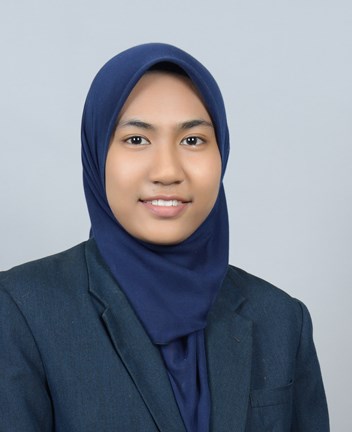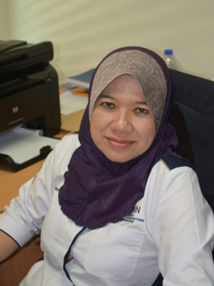Heavy metal ions such as lead, arsenic and cadmium are detrimental to human health. Studies have shown that continues ingestion of lead, for example, may harm our neurological, hematological, gastrointestinal, cardiovascular and renal system. World Health Organization (WHO) has subscribed to the maximum allowable limit of 10 ug/L of dissolved lead in drinking water. In Flint, Michigan, USA it has been reported in 2016 that 20% - 32% of homes had 25 ug/L of lead level in its drinking water. In some of the samples tested, the level exceeded 1000 ug/L. At this level, percentage of children having blood lead concentration exceeding the recommended 5 ug/dL was raised from 4% to 10.6% within a year. Similar recent reports of lead or other heavy metal contamination can also be found for countries such as China, India, Brazil and Malaysia. Most of the contaminations were attributed to leeching of old leaded pipes, mining activity, burning of leaded fuel, and natural weathering of lead minerals from the environment. Whatever the sources are, the level of dissolved lead in either drinking or raw water needs to be closely monitored. Techniques to sense or detect lead ions using fluorescence, colorimetric, surface plasmon resonance, and electrochemistry have been widely demonstrated. Such techniques, however, are typically one-off use and not suitable for real-time online monitoring purposes. In this work, an alternative approach using DNA is proposed. Guanine-rich DNAs (GDNA) such as N-Myc, T30695m and HTG, have strong binding affinity towards lead (II) ions. It is an ideal sensing element for graphene-based field-effect transistor (GFET) sensor as demonstrated in our recent work. However, it is not absolutely selective and will still bind with commonly found cations such as sodium, potassium, magnesium, etc. As such, when enough of these cations are present, the probability of a false positive reading for lead (II) ion is very high. This research aims to elucidate a mechanism that can discriminate heavy metal ions from other cations using a generalized multicomponent competitive Langmuir adsorption model. This is done by formulating an algorithm that treats each GDNA as an adsorption site and the metal cations as the competing adsorbates. Essentially, the first order differential equations that describe the net rate of adsorption and desorption of the system are used. Then, the adsorption and desorption constant can be deduced by solving the first order differential equations with respect to time. To predict the change in the charge neutrality point (CNP) of the GFET, the GFET itself is treated as a parallel plate capacitor. Hence, the change in CNP can be established by taking the ratio of change in surface charge (or the associated cations) over the capacitance of the GFET. The surface charge here includes the surface density of DNA-cation complex, surface area of graphene, capacitance of the oxide layer and the normalized coverage of DNA-lead (II) ion complex. From these relations and cation-DNA complex’s standard association constant, a temperature dependent change of CNP as a function of association constant can be established. Since the ‘melting point’ is unique to individual cations, theoretically, individual ions can be inferred from the rate of change of CNP with respect to temperature. Not only that, the degree of the corresponding cation contributions towards the overall observed sensing response should be calculable through the model as well. For model validation purposes, actual GDNA GFET sensor will also be fabricated and characterized.

Nadia received her first class honors degree in Electrical and Electronic Engineering from Universiti Teknologi PETRONAS (UTP) in 2018. During her final year, she investigated the metal-ions induced current modulation in DNA-attached graphene field-effect transistor (GFET). She is very familiar with graphene synthesis, graphene-based device fabrication as well as characterization and analysis. She has developed strong interest in research and currently pursuing her graduate studies at UTP. Her project is focused on understanding the interplay between cations-guanine-quadruplex on GFET. The findings could lay a foundation for highly sensitive and selective heavy metal ion sensors.
Zainal Arif Burhanudin received his B.Sc. in Engineering Physics from University of Tulsa, Oklahoma, USA in 1993, M.Sc. in Semiconductor Science & Technology from Imperial College, London, UK in 2000 and Ph.D. in Nanotechnology from Shizuoka University, Hamamatsu, Japan in 2007. He joined UTP in 2000, where he is currently an Associate Professor in the Electrical and Electronic Engineering Department. Prior to joining UTP, Dr Zainal had close to 3 years of industrial experience working as engineer with Shin-Etsu Handotai and Digital Circle. His current research interests are applications of carbon-based nanomaterials such as carbon nanotubes, graphene, and its hybrids in sensing and light emitting devices applications. He has received national and international grants worth in excess of one million ringgit.

Norani Muti is a professor at the Department of Fundamental & Applied Sciences at Universiti Teknologi PETRONAS (UTP) and the fellow of the Academy of Sciences Malaysia (ASM). She founded “Centre of Innovative Nanostructures and Nanodevices (COINN)” with the objective of establishing a library of nanomaterials and synthesis techniques for accelerated production of innovative and beneficial commercialized products. In 2011, COINN has been recognized as NanoMalaysiaCOE based on its continuous R&D effort on nanotechnology, focusing on alternative and renewable energy. Research works undertaken are very much focused on cutting edge research areas ranging from novel innovative nanostructures to functional nanodevices. She had secured more than RM25 million in research funding from various national grants and industrial petroleum research funding with accomplishment of more than 10 research grants as principle investigator. She is also actively involved in ISO/TC229 as the technical expert and as the chairman for working group 2 (measurement and characterization) in Malaysia